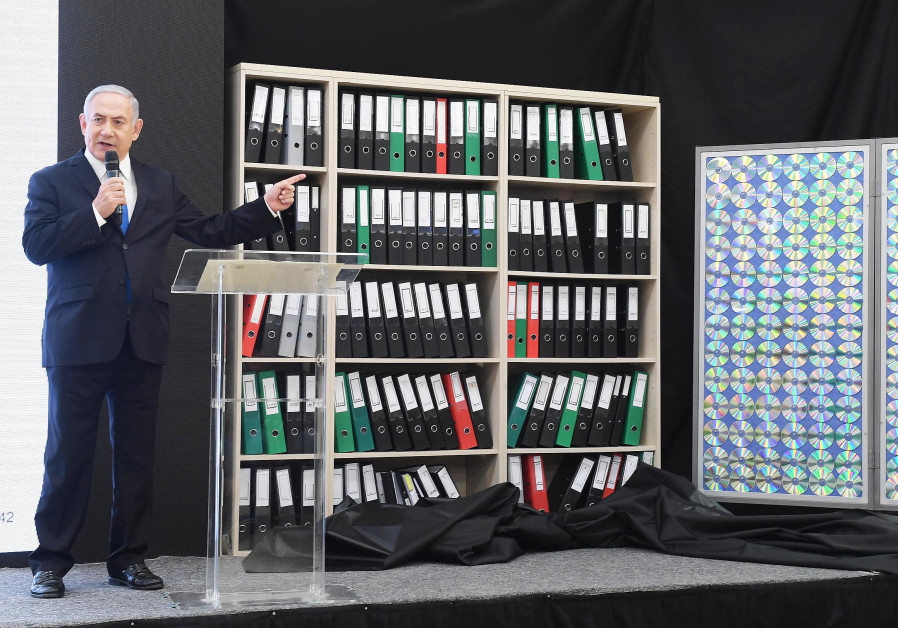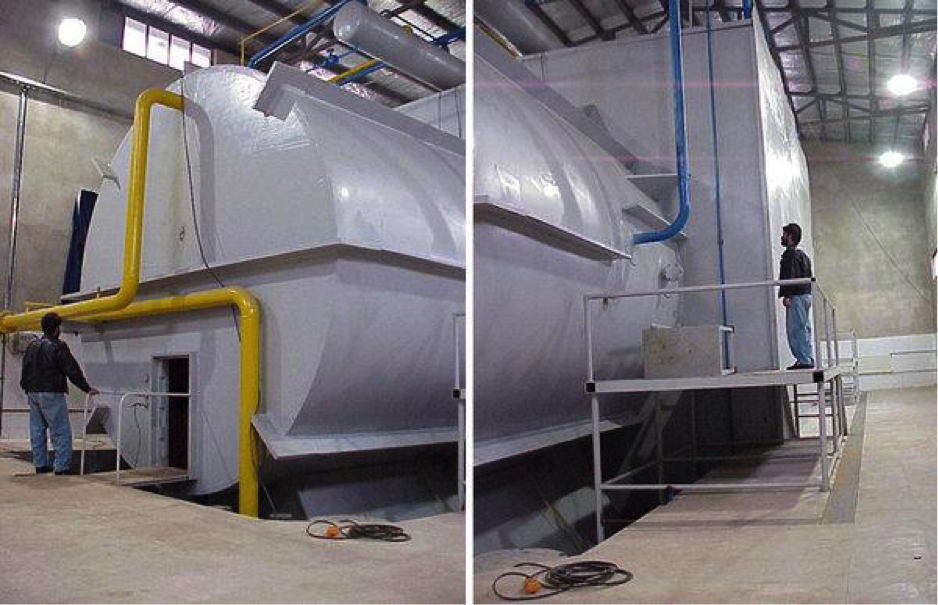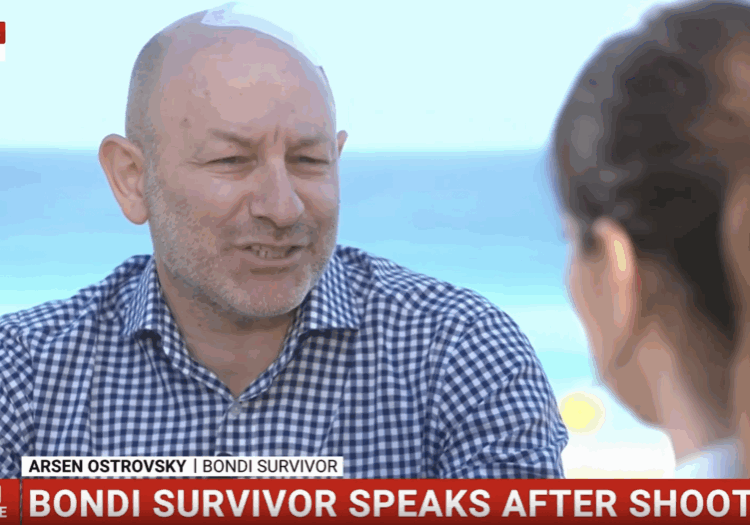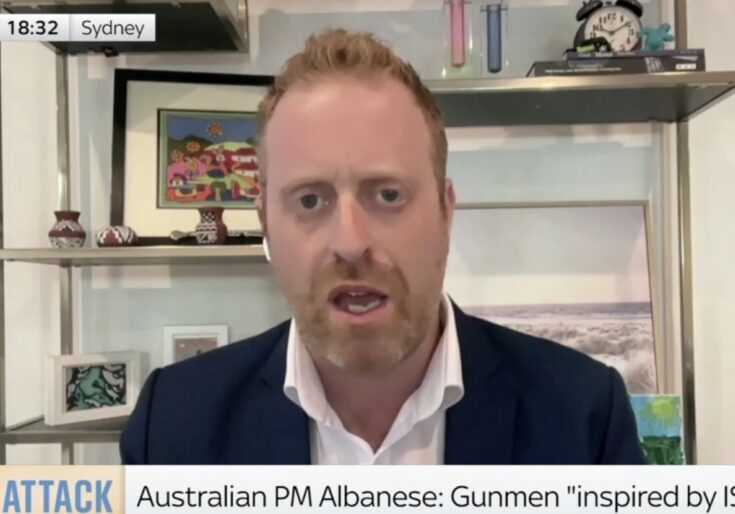FRESH AIR
New revelations from Iran’s nuclear archive: Iran was closer to a bomb than suspected, Rouhani was personally involved
July 19, 2018 | AIJAC staff

As Israeli Prime Minister Binyamin Netanyahu revealed to the world on April 30, on January 31, in a daring ‘James Bond’ style operation in the heart of Teheran, Mossad agents stole more than 100,000 carefully concealed Iranian nuclear documents and smuggled them to Israel. These documents, files, photos, lists, tables and more were meticulously collected by Iran to conserve the secret AMAD project to produce a nuclear bomb – which operated at least until 2003.
Information from the archive shared with the US government was one of the reasons for US President Donald Trump’s decision to withdraw (May 8) from the 2015 nuclear deal between the West and Iran (JCPOA).
AIJAC has previously summarised the major publicly-available revelations from the archive, as explained by leading nuclear experts.
Yet over the past few days, the New York Times, Washington Post and other major international news outlets have published additional significant information that Israel has publicly revealed drawn from the vast trove of Iranian nuclear documents (along with new details about the operation to obtain them). The new revelations can be divided into two categories: evidence that Iran was closer to achieving a nuclear bomb than earlier suspected; and proof that the current Iranian leadership was personally involved in the project.
Advanced experiments to develop a nuclear warhead
A functional military nuclear weapons system effectively requires three ingredients: sufficient fissile material; a fully tested nuclear warhead design; and means to deploy and launch your weapon. With regards to Iran, nuclear enrichment dealt with the first part, while the ongoing long-range missile program has focused on producing the last element. The new revelations from the nuclear archives apparently establish that the Iranians were fast approaching their goal of manufacturing a sophisticated nuclear warhead.
There are two pieces of compelling evidence leading to this conclusion. The first relates to the activities at the Parchin military site. Despite official denials from Teheran, the site has long beensuspected of being the location where a nuclear warhead was being developed. In 2015 inspectors from the International Atomic Energy Agency (IAEA) were given very limited access to the facility – but only after years of comprehensive work by the Iranians to sanitise the site, replacing virtually all the topsoil in it with fresh ‘uncontaminated’ soil, while demolishing buildings and covering them with new asphalt. Still, the inspectors did discover enough ‘man-made’ nuclear particles to suggest that Parchin was likely used for forbidden nuclear activity. But they did not have conclusive proof. Until now.

This photo is of a giant metal chamber, housed in a building at Parchin. The purpose of the chamber is believed to be conducting high-explosive neutron experiments, experiments which are unequivocally tied to implosion-type nuclear warheads.
High speed neutrons are the initiators of the nuclear chain reaction in a bomb – they split nuclear fuel atoms inside the atomic core, leading to the release of both further neutrons and massive amounts of energy, and thus the nuclear explosion.
Other documents from the archive show radiation contamination measurements conducted after a 2002 neutron-generating explosive test at the chamber.
The second piece of evidence which completes the puzzle are the numerous references to uranium deuteride (UH3) metal in the Iranian nuclear documents. This is a substance used to produce one type of neutron initiator mechanism – the kind used in the nuclear weapons designs of both Pakistan and China – but not used for any other purpose.
It should also be noted that when briefing reporters Israeli intelligence also claimed that they discovered in the archives atomic weapons blueprints that come from non-Iranian sources. However, they could not make those plans public because doing so would only faciliate nuclear proliferation.
Top echelon directly engaged with atomic bomb project
The second category of new information from the archive demonstrate the deep and direct involvement of the Iranian Revolutionary Guard Corp (IRGC) in the well-organised and run AMAD project. More importantly, it is now clear that the supposedly “moderate” Iranian leaders who negotiating the JCPOA with the West, specifically Iranian President Hassan Rouhani himself, were an integral part of the atomic bomb project.
Looking into Rouhani’s biography this is no surprise. Before becoming the president of the Islamic republic, Rouhani was a senior decision maker and diplomat on behalf of the Iranian nuclear program. Now, the archive documents clarify Rouhani’s direct personal involvement in the nuclear weapons program. In one of the charts from the archive, Rouhani is listed as part of a “Council for Advanced Technologies” that approved and oversaw the nuclear project.
However, during the talks with the West to formulate the JCPOA in 2014, Rouhani famously publicly insisted that Iran has made a conscious and principled decision not to pursue nuclear weapons. A year earlier, to the US media, Rouhani was even clearer when he stated: “We have never pursued or sought a nuclear bomb and we are not going to do so. We are solely seeking peaceful nuclear technology.”
The archive provides unequivocal evidence that he was lying and knew it.
Further, it also demonstrates that while handshakes and official photo shoots were being orchestrated between Obama administration officials, EU negotiators and Iranian diplomats as the JCPOA nuclear deal was sealed in 2015, the Ayatollahs in Teheran were executing plans to preserve and maintain all relevant knowledge to resume work on the bomb when circumstances allow – as well as illegally hide all key nuclear documents from International Atomic Energy Agency inspectors.
In addition, contrary to some media claims, the archive revelations show it is incorrect to say Iran’s nuclear efforts were curtailed or limited following the official end of Project AMAD in 2003.
Iranian documents make it clear the intention was to continue nuclear work on just as large a scale, just under a new half covert, half overt organisational structure.
In late 2003, AMAD managers discussed how to continue relevant work under the Organisation of Defensive Innovation and Research (SPND), for example, in neutron generation and training new experts.
The Washington Post quotes from one of the memos found in the archives by an Iranian official, from September 3, 2003: “Let there be no mistake: the amount of personnel in the overt and covert parts will not decrease […] The structure will not become smaller, and every sub-project will supervise both its overt and covert parts.”
Everybody lies, yet…
What are the lessons to be learnt from this newly released evidence from Iran’s secretive nuclear archive? First, it reiterates past conclusions from previous analysis of the archive: the Iranians have not come clean about what they have done, and possibly continue to do, to achieve nuclear weapons. Teheran continues to play cat-and-mouse with the truth, to refuse to come clean about past efforts and to seek to preserve the ability to resume nuclear weapons work as soon as it is politically feasible. In fact, by building and hiding the archive, Iran clearly breached its key obligations under the JCPOA for the agreement to come into force, suggesting the whole agreement is based on falsehood.
In the past, the Iranian leadership lied while negotiating the JCPOA agreement, successfully navigating it to a point where it could maintain its nuclear weapons capabilities under the radar. This was done with full complacency of their Western counterparts at the time, who were very generous with financial and political rewards to the Iranian regime after the deal was signed. The argument put forth by Obama and other Western officials negotiating with Iran was that they knew the Iranians were lying, but this was unimportant if they achieved a robust inspection regime monitoring Iran’s activities.
In international diplomacy, the cliché is that everybody lies. However, even in such an environment, agreements must be based on some minimum level of trust. Iran has done nothing to show it is worthy of even a modicum of trust, and this archive proves it continues to play a double game. The supposedly “moderate” Rouhani government is very much party to those efforts.
Given Iran’s years of experience in concealing its forbidden activity, there is very little reason to believe that the limited inspection arrangements provided under the JCPOA will prevent a future nuclear-armed Iran.
Tags: International Security, Iran, Israel, JCPOA
RELATED ARTICLES

The Government’s actions still fall short: Joel Burnie on FDD Morning Brief

“The writing was on the wall for a number of years”: Colin Rubenstein on Channel 7 Weekend Sunrise





















